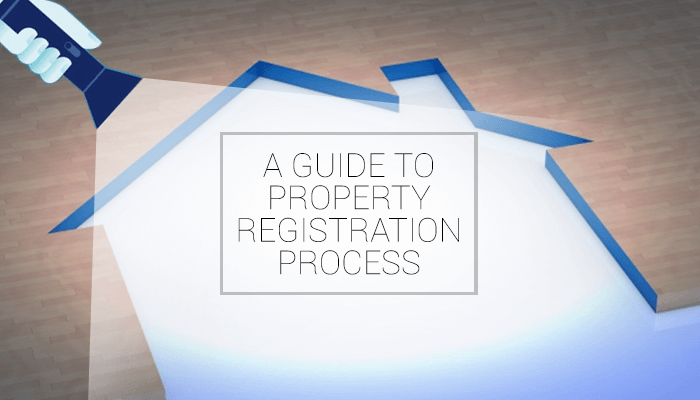Market Practices On Immovable Property Valuations

Written by Sujesh Nair
Sujesh is a Fellow of The Institution of Valuers India, Chartered Valuer-IIVIndia and a Chartered Engineer
All of us may have come across the term arket practices in every profession. Well, in lending business, to my understanding this phrase is often used when an ideology or a general practice, with or without logic, is outside the policy framework of a financial institution and probably a void in regulator guidelines. Suddenly, discussions happen, mails float and finally the ideology is either accepted or rejected by lenders.
Welcome to the blog of arket practices on immovable property valuations!
In retail home loan / mortgage business immovable property valuations are critical part of underwriting yet are highly subjective. The most preferred method of residential property valuations is the comparison method and cost method for underwriting loans. Let us see some market practices which became unsaid norms over time without the logics being questioned.
Flat Purchase from Developer Retail Home Loans:
Let me illustrate a retail lending for a flat being sold by a developer in an under construction residential project. The practice followed by most valuers, today, is to refer the price / cost quoted by the developer as fair market value. Its true that a developer has all rights to decide the price of his final product. But does it imply that this quoted price has to be the fair market value A valuer should ideally be working out the demand-supply statistics in a given micro-market, refer past records of price trends, weigh similar other projects in the vicinity in terms of amenities cost and pricing, probe if the project is into litigation or has any title concerns and finally come out with his assessment of fair market value. Unfortunately, we seldom come across a valuation report which reads why a given project has a quote of X unit rate as against an adjacent project having Y unit rate. The fact is, this difference of X and Y are never explored while preparing valuation reports. The broader understanding is to avoid this effort, if the pricing falls within a certain range. So comparison method is practically dead here. Surprisingly, its still unknown as to who initiated this market practice.
Business decisions of most lenders often had a tendency to overlook these observations or findings and preferred to appease the developer in hope for a better penetration of retail home loans in a project. They also took in to account the benefits of creating a lasting developer relationship and saw this as an opportunity to convert it into a potential channel for future retail business. The technical premise was that such quotes were in close range of actual transaction cost and would not largely impact the underwriting and lending decision. Well! Even drops of water can make an ocean! Over a period of time, what should have been a comparison method, got transformed into just replicating the quotes of developers as the fair market value. Most banks and Housing Finance Companies follow this practice as an unsaid norm and authoritatively question the valuer if he / she does not follow this. Having said this, knowingly or unknowingly, matching the cost of property as market value also became the USP Unique Sales Proposition of some business aggressive financial institutions. Eventually some bankers / Housing Finance Companies ended up competing with each other on fair market value in pursuit to impress developers, borrowers and capture the market share. Unfortunate to quote, the regulators and most lenders are yet to implement exhaustive audit mechanism to check tweaking of immovable property valuations.
Even when the real estate market experiences a slowdown and property prices see corrections the valuers are left with no option but to go by developers cost sheet. I must quote the instance of a reputed valuer in the small micro-market of Kerala who is really worried about this practice. Not for the goodwill he holds for financial institution he is empaneled with, but for himself. Because, the same flats which he had valuated considering the developer quotes and cost sheet for retail funding, was now to be revaluated by him for SARFAESI proceedings. He knew that there were limited takers for the prices initially quoted by the developer and now the fair market value cannot be matched with these figures - all these developments in a span of less than 2 years. The same apprehensions were highlighted by a reputed valuer in Pune. Unfortunately, he maintains, this lethal practice is now deep rooted and is tough to weed out unless initiated by financial institutions or instructed by the regulators. In few micro markets in Pune, some developers show higher pricing in cost sheet while actual transaction or negotiated cost differ by almost 10-12% from the cost sheet. The direct beneficiary of this flawed practice is borrower, being funded almost 100% of the agreement value and little own contribution on his part towards the purchase of flats. This directly impacts the risk exposure set by the regulators ie; LTV Loan to Value Ratio.In most cases the valuers are not at fault here as lenders should insist for project clearance valuation reports with alternate methods of valuations along with comparison method. This can attach logics to the unit rates and retail property valuations thereby reducing subjectivity in valuations.
Super Built Up Area to Carpet Area and Vice Versa:
Developers created the concept of super built up area to account for sale of the common spaces and amenities which otherwise were not covered in Carpet Area. Without much deliberation the concept was accepted by valuers too since no common space, land or amenities come for free. The percentage of loading on carpet area was decided by the developer since the cost of amenities, common spaces was unique for every project. The loading range of 20% -50% and as high as 80% for some super luxury flats in Mumbai became an unsaid norm, city wise, location wise, developer wise, project wise without any base calculations or logic. Ideally, the total estimated cost of project and of amenities should have been disclosed and a reasonable justification of loading could have been furnished to stakeholders, but never happened. Unfortunately this remained a grey area for quite some time which impacted the cost of property, valuations and primarily the profit margins of the developer.
When RERA Real Estate Regulatory Authority was implemented as relief for investors and home buyers, care was taken to abolish this system of super built up area which remained unexplained. So, for RERA notified states, we conclude that this arket practice is history.
Is it really so I doubt. Because, when the comparison method is used valuers are expected to compare primarily the present prices and the past price trends. After Super Built Up Area becomes obsolete, a valuer now has 2 bench marks. One is the latest cost of property on carpet area and second is past price trend ie; cost of property on super built up area. So, a valuer will ideally have to reverse calculate the unit cost on carpet area by using the old loading percentage on the basic cost of property. Again, if the basic cost of property is increased or decreased by the developer, it is tough to be gauged or viewed by a valuer basis the unit rate. Fortunately or unfortunately, we must conclude that, at least as a transition phase, the loading concept or super built up area concept is still alive and will remain so for a some period of time.
The regulator missed out the influence of this arket practice in valuation of retail loans while scrapping the super built up area concept. Now an organized valuer is posed with a challenging task of changing his / her benchmarking on unit rates and needs to be vigilant on the new quotes on carpet area by developers.
Balance Transfers and Top Ups Loans in Residential properties:
Balance transfer of existing home loans from one lender to another is one of the products in retail lending. The borrower is often benefited with a balance transfer in terms of lower rate of interest ROI on home loans, enhanced tenure to lower existing EMIs Equated Monthly Installments, additional top up loan with same property as security etc... The empaneled valuers in different Banks / Housing Finance Companies are different. And so the assessment of fair market value may also differ. So far so good. But how challenging this product can be when present day valuation is less than or almost equivalent to the loan disbursed by existing lender Forget about Top Up, you cannot even take over the balance loan amount. This is where the Pandora box opens up. And there is a whole R & D into what is wrong with a valuer, why is he / she giving so low valuation when another lender has already funded more than this in the past. There can be various valid reasons for such a scenario: multiple collateral securities on existing facility and borrower may want to release the mortgage of one of them through take over of loan; loan booked under a product which permits higher LTV etc... Though, these factors can be understood from the copy of existing sanction letter. Still if the gap remains, it is a case of inflated valuation on existing loan. Now coming back to my topic of arket practice Though limited to few unethical valuers and some aggressive lenders, the practice is to inflate the already stretched market value figures and not only facilitate the transfer of loan but also accommodate top up loans. And this is grave if the funding amount runs into millions. This practice is so painful for ethical valuers, they often end up having friction with the lenders, all for giving genuine reports. As we know, changes in real estate prices over defined periods are non-uniform and hence balance transfer of a loan or top up loan is hugely dependent on the fair market value at the time of assessment. Ideally, the valuers forum, real estate market experts should, by way of quarterly reports, keep the regulators and lenders abreast of the market value fluctuations. And lenders can, on periodic basis, revise the minimum aging norms of existing loans for balance transfer products depending on the real estate price trends. This will serve as a grass root level check on inflated valuations in such products preventing ensuing risks.
Flaws in the present valuation practices:
As per International Valuation Standards market value is defined as: he estimated amount for which a property should exchange on the date of valuation between a willing buyer and a willing seller in an arm -length transaction after proper marketing wherein the parties had each acted knowledgeably, prudently and without compulsion
So, the market value is basically an estimate and the actual transaction value can be within a reasonable range of this market value, if not the exact figures. As per valuation report formats prescribed by most public sector banks the property comparisons should be documented in the report along with the details. In reality, most often, this portion of report remains blank or may have some vague details and often unquestioned by the Credit Managers or Underwriters in retail home loans / mortgage lending. If these justifications are mandated in a valuation report the subjectivity in valuation can be largely reduced. In matured markets like Pune registration data is available online in IGR Inspector General of Registrations website. These can also be used as reference points to bring down subjectivity. The arket practice today has moved towards negotiating of fair market value with valuers to fit in loan amounts. Its all up to the valuer to decide whether they want to behave ethical or unethical. Sometimes, the valuers are confused between prioritizing business relationships and following ethical practices. So, there are no good or bad valuation reports, there are only ethical and unethical valuers. The underwriters in retail lending primarily give more impetus to borrower profile and repaying capacity and valuations of the only security they hold, often get a back seat. Hence tweaking valuations, in some financial institutions is also categorized as alculated risk though, never documented.
Hope that the valuer fraternity and the lenders will not see this blog as demotivating or negative. Flawed valuations, unjustified market practices are ticking bombs and not in interest of either the lender or the borrower. Though, its not as intensive as that of mismanaged sub-prime lending or CDOs Collateralized Debt Obligation, but all of these when complementing each other in negative direction are a potential threat to national economy.
Experts and seniors should be vocal when there is threat or slowdown to real estate pricing trends. The movie nside Job a documentary on US economy collapse, shows how most of the top banks, regulators, stakeholders maintained a ositive approach till the moment the market actually collapsed. Some of the key reasons then were silent nod for the credit ratings to under performing firms, inflated appraisals on lending, poor regulator control, so on and so fo th. The biggest threat to any economy are such silent nods and ositive approach to even minuscule factors.
Nowadays, we often come across newspapers showcasing the percentage and volume of NPAs Non-performing Assets owned by banks particularly those in the public sector. Ideally the valuations of these so-called bad assets, both at the time of lending and on present day, should also be published. If repayment goes nil and repossession and reselling of properties are the only way out to recovering the loan, the above arket practices of inflated or flawed valuations might turn to be a nightmare for lenders. Lenders with repossessed properties will have no option other than to dispose off these at distress value and would be fortunate if they recover their principal outstanding amount.
In my firm belief, a borrower may not always be very keen on LTV and ROI, provided the lender pampers him / her with prompt quality service, quick decisions and work towards continuously reducing overall process TAT Turn Around Time in every file. Some say that home loan industry lacks innovations. Its high time to brush aside such comments and lenders should come up with innovative thoughts. Who knows, lenders may challenge their own skill sets, brainstorm, thereby upgrading in every step and cease worrying about the arket practices Just a thought - if personal loans can be disbursed in 10 seconds, why can home loans be disbursed in 48-72 hours Can anyone make it happen and still maintain the quality of due diligence standards
IIFL idea of Jhatpat Home Loans is a significant move towards reducing the overall home loan processing TAT. This needs to be effectively monitored and delays questioned with healthy debates for continuous improvement.
The regulators need to curb unethical practices by introducing strong audit and monitoring mechanisms in immovable property valuations. Like every profession has a negative side, every micro market has a set of unethical valuers who give priority to business relations and not the quality of valuation reports. Not to blame these valuers alone, sometimes good valuers are left with no option but to inflate valuations as some lenders themselves demand such requirements. And with inflated valuations some financial institutions gain an upper edge in market share by circumventing the LTV norms, risking their portfolio as well as the public money. These can curbed only through an organized approach of audit mechanism by regulators and lenders. The question is ho will bell the cat
Unless regulators pull up their socks, not many lenders will fall in line and the disparity in valuations will co-exist in the form of business propositions and ethical lenders will remain devoid of equal opportunity. On the other hand, lenders need to challenge themselves for quality improvement and avoid blindly following concepts under the banner of arket practices !
Ending with some quotes for the readers to contemplate:
othing comes without consequence br Andri Magnason, Filmmaker and Author of nside Job
f you owe your bank a hundred pounds, you have a problem. But if you owe a million, it has John Maynard Keynes, Famous British Economist
Disclaimer:
All content provided on this blog is for informational purposes only. The opinions provided herein are solely of the author and do not, in any which way, reflect the views of IIFL Home Finance Limited. The author makes no representations with regard to the accuracy or completeness of any information available on this blog/site/ link on this site and shall not be liable for any errors or omissions on the account of the information provided herein. The information provided herein is basis the current market pattern and subject to change from time to time.
Tags
Disclaimer: The information contained in this post is for general information purposes only. IIFL Home Finance Limited (including its associates and affiliates) ("the Company") assumes no liability or responsibility for any errors or omissions in the contents of this post and under no circumstances shall the Company be liable for any damage, loss, injury or disappointment, etc. suffered by any reader. All information in this post is provided "as is", with no guarantee of completeness, accuracy, timeliness, or of the results, etc. obtained from the use of this information, and without warranty of any kind, express or implied, including, but not limited to warranties of performance, merchantability, and fitness for a particular purpose. Given the changing nature of laws, rules, and regulations, there may be delays, omissions, or inaccuracies in the information contained in this post. The information on this post is provided with the understanding that the Company is not herein engaged in rendering legal, accounting, tax, or other professional advice and services. As such, it should not be used as a substitute for consultation with professional accounting, tax, legal or other competent advisers. This post may contain views and opinions which are those of the authors and do not necessarily reflect the official policy or position of any other agency or organization. This post may also contain links to external websites that are not provided or maintained by or in any way affiliated with the Company and the Company does not guarantee the accuracy, relevance, timeliness, or completeness of any information on these external websites. Any/ all (Home/ Loan Against Property/ Secured Business Loan/ Balance Transfer/ Home Improvement Loan/ NRI Home Loan/ Home Loan for Uniformed Services) loan product specifications and information that may be stated in this post are subject to change from time to time, readers are advised to reach out to the Company for current specifications of the said (Home/ Loan Against Property/ Secured Business Loan/ Balance Transfer/ Home Improvement Loan/ NRI Home Loan/ Home Loan for Uniformed Services) loan.
 Login
Login






















